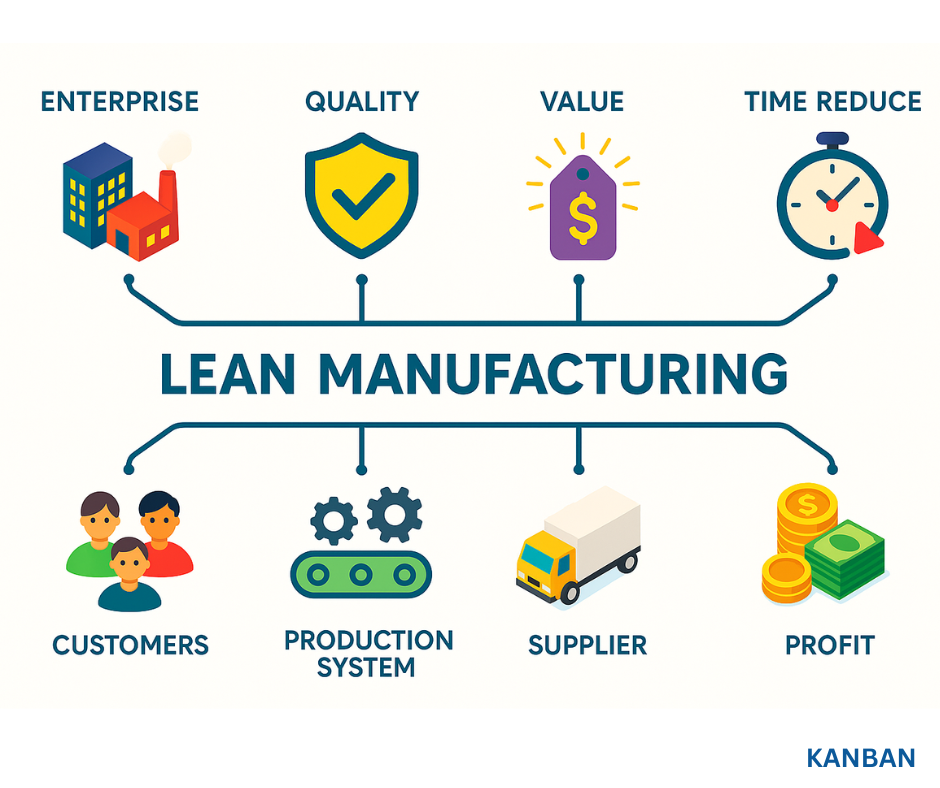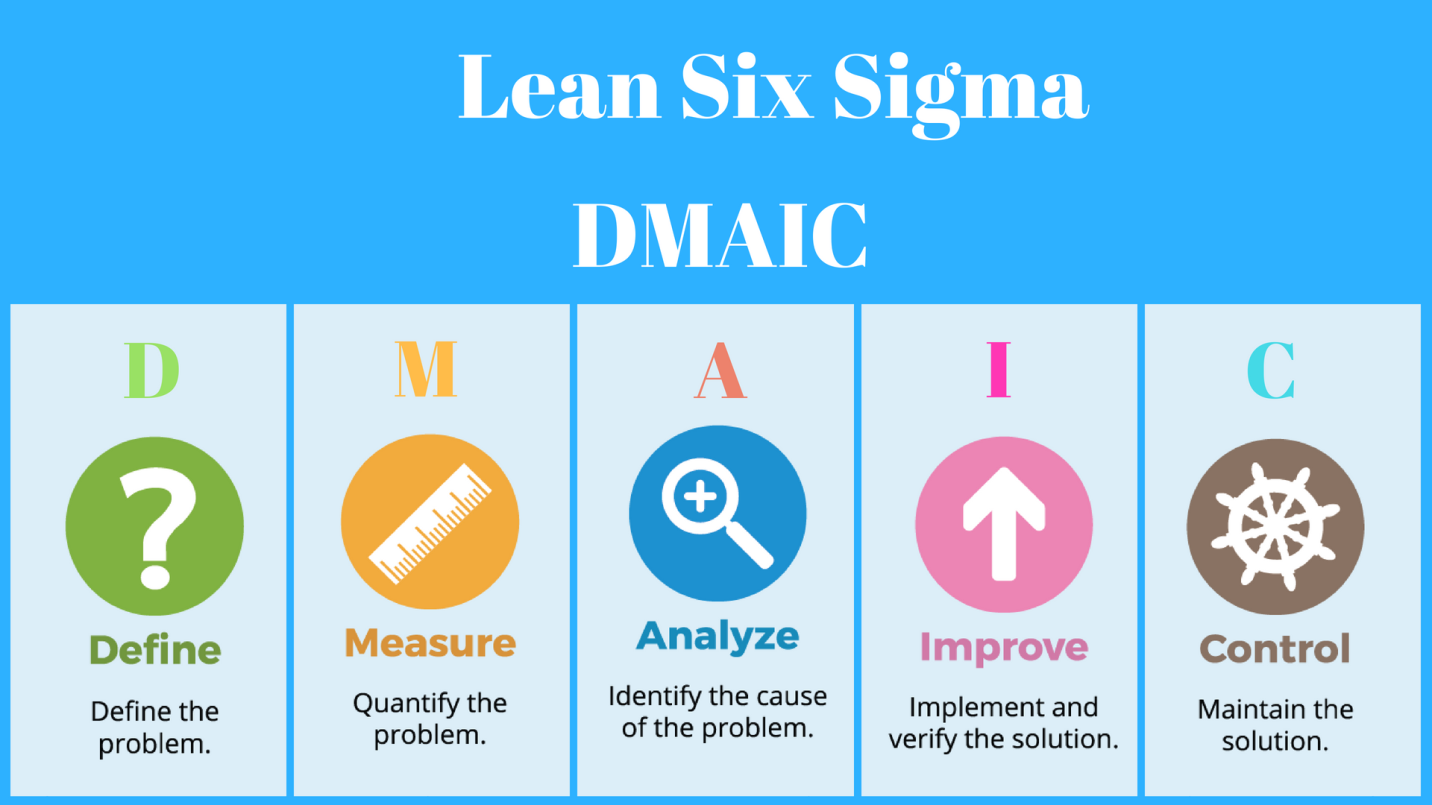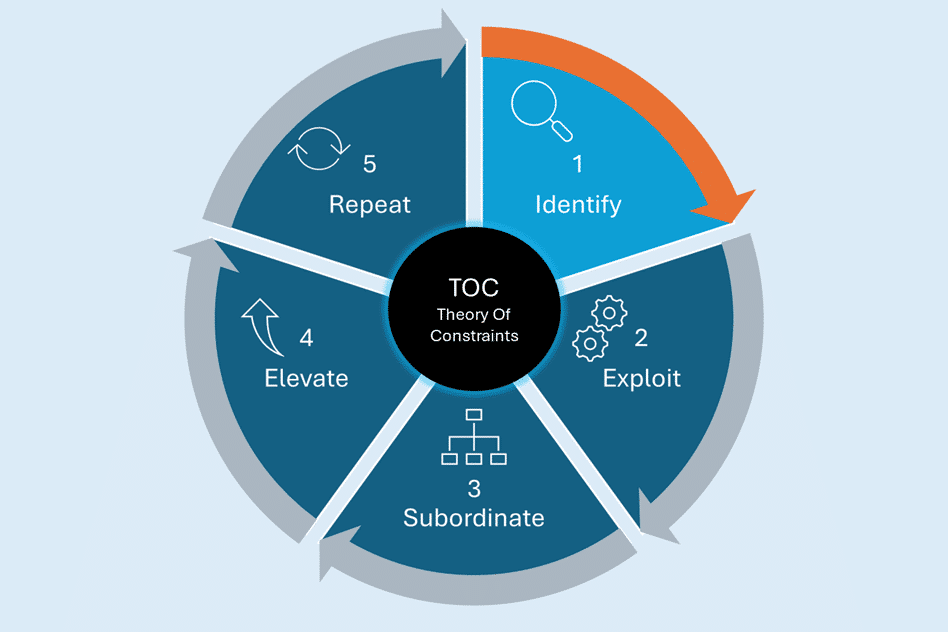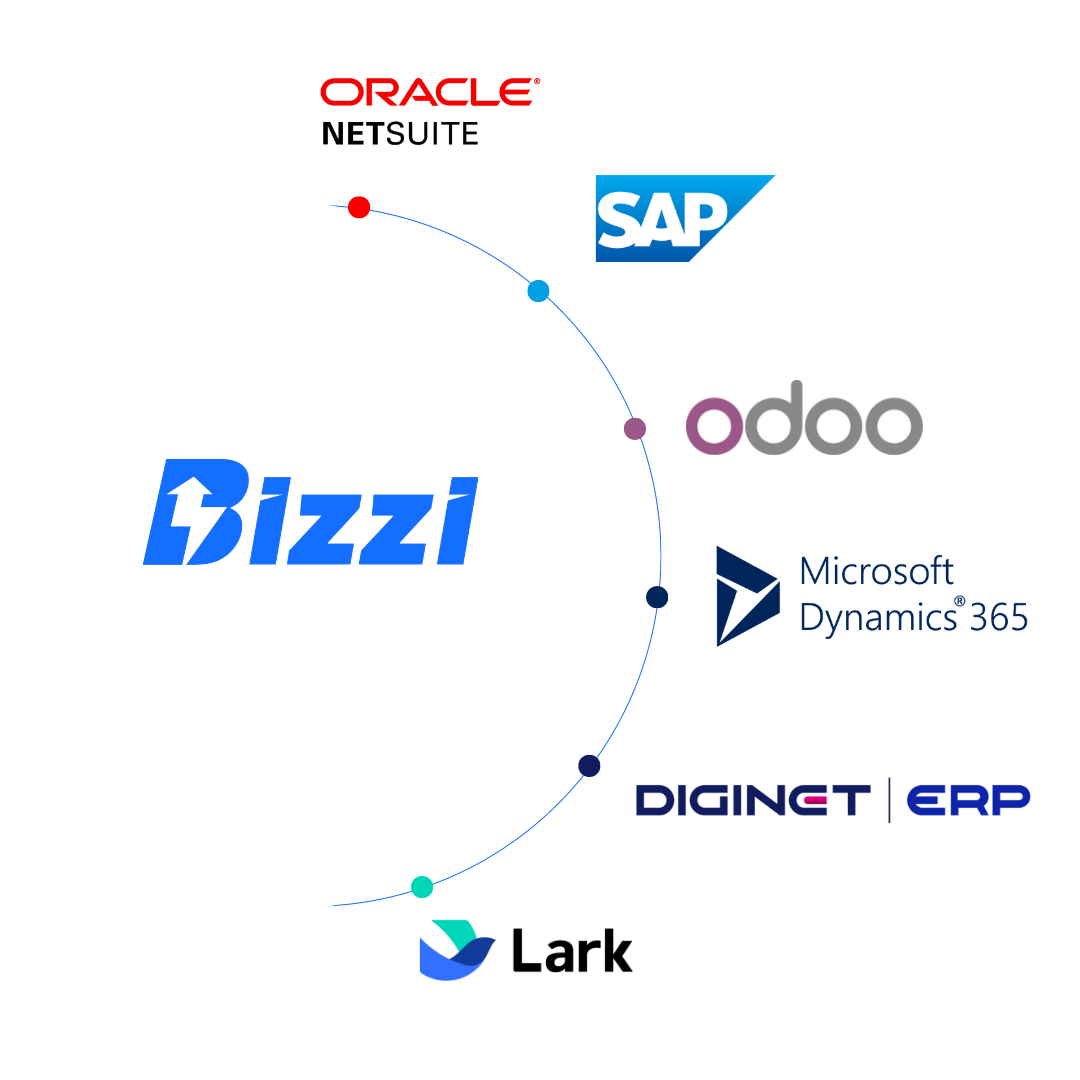Production management model is a system of principles, methods and tools applied by businesses to plan, coordinate and control the entire production process, thereby optimizing the use of resources, reducing waste and improving competitiveness. Choose the right one production management model Appropriateness not only helps businesses operate effectively but is also the foundation for sustainable development, especially in controlling input costs.
What is production management model?
Production management model is a structured framework that includes the activities of planning, organizing, operating and controlling the entire production process. The main objective is to convert raw materials into finished products at the lowest cost, highest quality and fastest time, meeting the exact needs of the market.
One production management model Efficiency focuses not only on the assembly line but also incorporates principles of inventory control, job design, and especially budget control. Tight management of incoming invoices and operating costs is the foundation on which these models work.
The role of production management for business
- Cost optimization: Minimize production costs through the elimination of waste, application of technology and advanced production methods. This includes not only raw material costs but also control operating costs and manage cash flow effectively, ensuring that all expenses are optimized. Businesses that apply ERP can reduce operating costs by an average of 23% (according to Aberdeen Group).
- Improve product quality: Standardizing processes and strictly controlling stages helps improve product quality, build reputation and strengthen customer loyalty.
- Increase labor productivity: Improve employee and machine performance through training, proper assignment, and automation.
- Respond to the market promptly: Providing products and goods to customers at the right time, quantity and quality required, increasing competitive advantage.
- Ensure a safe working environment: Build a safe working environment, minimize occupational accident risks, and comply with safety regulations.
Core elements of an effective production management model
- Design: Standardized technology and product processes.
- Forecast: Accurately grasp market demand to plan production.
- Control: Closely monitor production systems, quality, inventory and especially related expenses.
- Capacity: Identify and manage appropriate production capacity scale.
- Positioning & Layout: Select production area and arrange scientific floor plan and production line.
- Human resources: Plan and develop resources to meet production needs.
- Moderation: Set up a schedule and assign work in detail and clearly.
6 Most Popular and Effective Production Management Models
Here are 6 production management model widely applied and proven effective globally, depending on the industry and business goals.
1. Lean Manufacturing Management Model
- Concept: Lean Manufacturing focuses on eliminating eight types of waste in the manufacturing process. One of the often overlooked wastes is administrative waste, such as the time and cost of processing invoices and manual payments.
- Benefit: According to McKinsey, applying Lean can reduce 25-30% of waste. This benefit is amplified when businesses combine Lean with automated financial solutions, helping to reduce errors and hidden costs in purchasing and payment.
- Typical case study: Toyota has had great success with Lean. They have optimized every step, including standardizing the payment process for suppliers to ensure uninterrupted production flow.

2. Six Sigma production management model
- Concept: Six Sigma is a production management model Data-driven, focused on defect reduction. The goal is near-perfect quality, with only 3-4 defects per million units (equivalent to 99.9997% quality).
- Benefit: Increase profits not only by reducing product defects but also by reducing errors in supporting processes such as finance. Applying Six Sigma to the payment process can almost completely eliminate double-billing and incorrect payment errors.
- Application process (DMAIC):
- Define: Identify customer problems, goals, and requirements.
- Measure: Collect data and measure current process performance.
- Analyze: Analyze data to find the root cause of the problem.
- Improve: Implement solutions to eliminate root causes.
- Control: Maintain process improvements and monitoring to ensure errors do not recur.

3. Production Management Model based on Theory of Constraints (TOC)
- Concept: TOC is a management method that identifies and focuses on improving “bottlenecks.” This bottleneck could be a machine, or it could be a slow payment approval process that prevents raw materials from being delivered on time.
- Benefit: Maximize the throughput of the production line. Ensuring a Supplier Payment Process Fast and efficient will help solve the “bottlenecks” related to the supply chain.
- 5-step process applied:
- Identify system limitations
- Exploit Maximize the capacity of the bottleneck without large investments.
- Constraints Other processes operate at the pace of the constraint.
- Upgrade yield of the limiting point if necessary.
- Repeat process when a new constraint appears.

4. Just-In-Time (JIT) model
JIT is an inventory management strategy that involves receiving goods only when they are needed. For JIT to be successful, a business must have an excellent relationship with its suppliers, and this is reinforced by timely and transparent payments, a major challenge without effective cost management systems.
5. Toyota Production System (TPS)
TPS is an integrated system that encompasses both Lean and JIT. Its foundation is stability and reliability at all levels, including finance and accounting. Stable cash flow and standardized payment processes are essential supporting factors for TPS.
6. Kaizen Model (Continuous Improvement)
Kaizen is a philosophy of continuous, incremental improvement. Applying Kaizen to the finance department, such as continually looking for ways to optimize the disbursement approval process, will indirectly support the entire manufacturing operation.
Compare production management models
To choose the right model, businesses need to understand the differences between them. Below is a detailed comparison table:
| Criteria | Lean Manufacturing | Six Sigma | TOC | JIT |
|---|---|---|---|---|
| Main objective | Eliminate waste | Minimize errors | Maximize throughput | Reduce inventory to 0 |
| Focus | Value stream | Stable process | Bottleneck | Time of production |
| Tools | 5S, Kanban, Value Stream Mapping | DMAIC, Control Chart | 5-Step Concentration, Drum-Buffer-Rope | Kanban, pull system |
| Suitable for | All types of production | Mass production, complex process | Businesses have clear bottlenecks | Repeatable production, stable supply chain |
How to evaluate the effectiveness of production management model through KPI
To measure the success of implementing a production management model, businesses need to track the following Key Performance Indicators (KPIs):
1. Overall Equipment Effectiveness (OEE)
OEE is the “golden” measure in manufacturing, evaluating equipment performance based on 3 factors: Availability, Performance, and Quality. OEE = Availability x Performance x Quality. The goal is to achieve an OEE above 85%.
2. Throughput
This is a measure of the number of products completed in a given period of time. High throughput indicates production management model is working effectively, especially when TOC is applied.
3. Cost per Unit
This KPI measures the total production cost divided by the total number of products produced. To get an accurate figure, businesses need a transparent and error-free system for recording input costs, which is where financial automation solutions come into play.
Applying technology to optimize production management model
The application of technology goes hand in hand with production management model helps businesses automate, collect accurate data and make quick decisions.
1. Enterprise Resource Planning (ERP) System
ERP is an integrated system that manages all core business processes (finance, human resources, manufacturing, supply chain). However, the financial subsystem of many ERPs still requires manual operations. Integrating ERP with specialized platforms like Bizzi will help to fully automate the cost flow.
For example: FPT IS implemented SAP ERP for Truong Thanh Wood. This business can further improve efficiency by integrating an automated invoice processing solution to reduce the workload for the accounting department.
2. Manufacturing Execution System (MES)
MES is a system that connects directly between ERP and the factory floor, collecting real-time production data. Data from MES combined with accurate cost data from financial systems will provide a complete picture of production efficiency.
For example: DACO's SEEACT-MES solution has been successfully deployed at Tan Long Packaging Factory, helping to digitize the entire production process.
Cut 30% manufacturing invoice processing costs – Try Bizzi Now to automate your financial processes and maximize support for your production management model!
Bizzi.vn: Optimizing financial management in production management model
Bizzi.vn is a financial automation platform that plays an important complementary role by Full integration with ERP systems to optimize back-office processes. Although not directly managing production, Bizzi helps businesses tightly control related costs, creating a solid foundation for all production management model.
- Automatic input invoice processing (IPA): The foundation of production is raw materials. Bizzi helps Automate input invoice processing, automatically compare with purchase order (PO) and warehouse receipt (GR), ensuring raw material costs are recorded accurately, without loss.
- Business Expense Management (Bizzi Expense): Every production management model needs a clear budget. Bizzi Expense allows you to set up and monitor real-time budgets for each production project, alerting you when spending exceeds the threshold, helping businesses be proactive in managing their budgets. business expense management.
- Accounts Receivable Management (ARM): Healthy cash flow is the lifeblood of production. By control of payables Effectively, Bizzi ensures suppliers are paid on time, maintaining a stable supply chain – vital for models like JIT.
- Seamless integration: Bizzi.vn has the ability to integrate with leading ERP systems such as SAP, Oracle, Microsoft Dynamics, enriching financial data, helping managers have a 360-degree view of costs and production efficiency.

Conclude
The production management model Modern approaches such as Lean, Six Sigma and TOC are powerful tools for process optimization. However, their effectiveness can only be fully realized when supported by a solid financial foundation. Cost control is not just the responsibility of the accounting department but is an integral part of the manufacturing strategy.
By automating core financial processes like invoice processing, expense management, and debt control, solutions like Bizzi.vn helps eliminate waste, minimize errors, and ensure a steady cash flow. This directly reinforces and improves efficiency for any production management model whichever business chooses.
Read more:


